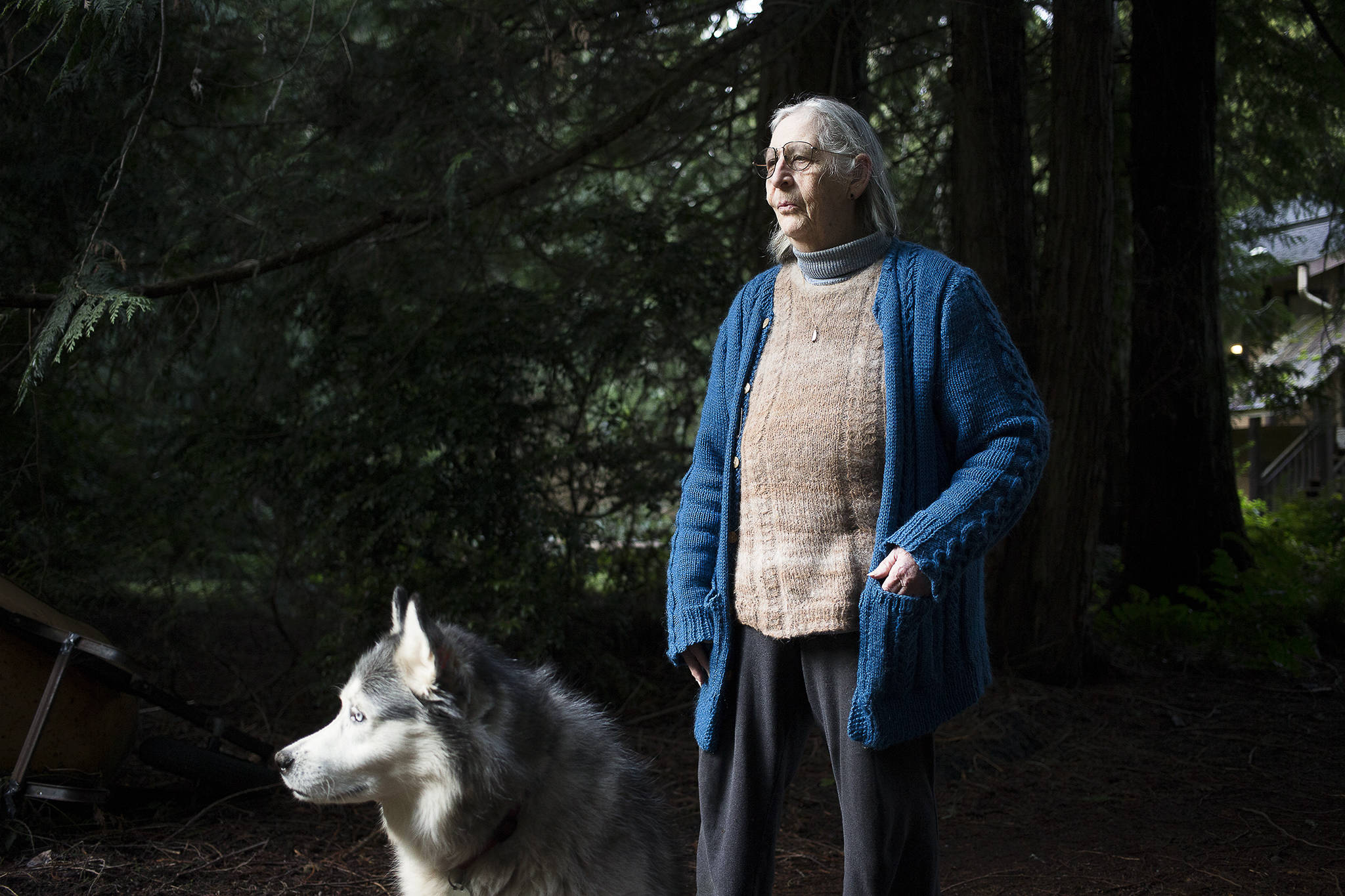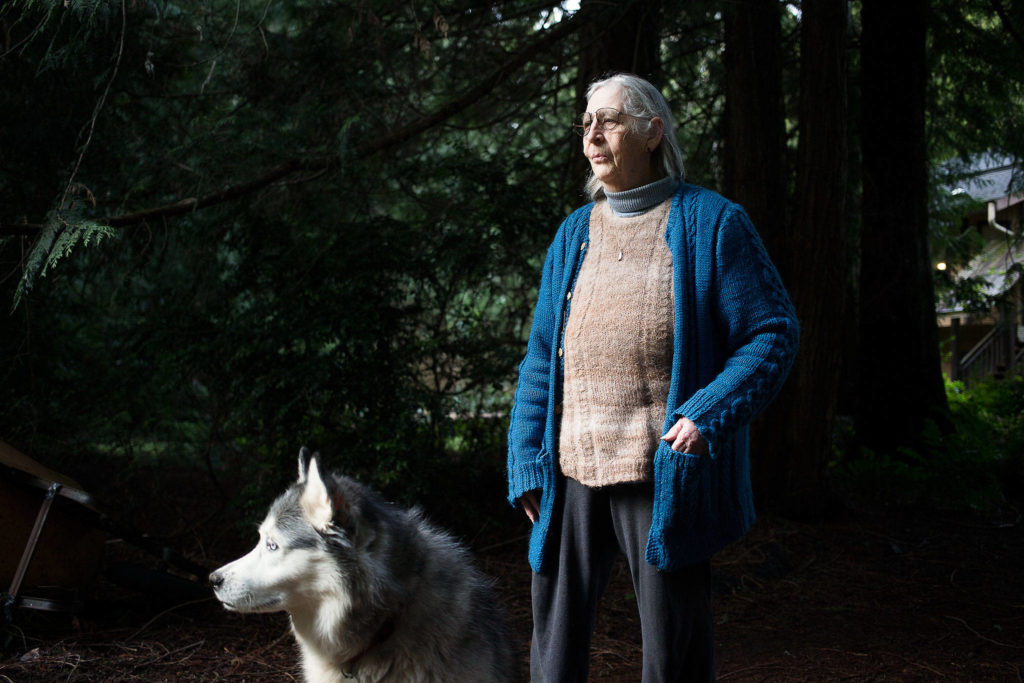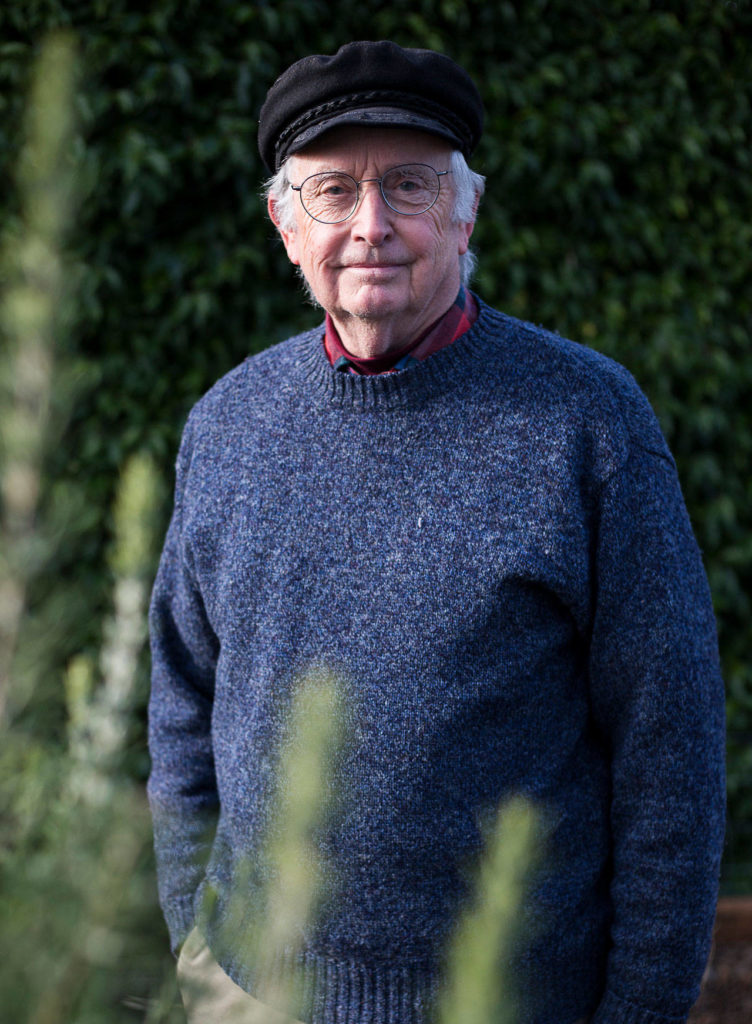LANGLEY — Some of Island County’s best-known climate activists are young, including members of the South Whidbey-based United Student Leaders. But in this retirement destination, where a quarter of the residents are over 65, there are plenty of elders who share the teenagers’ planetary worries.
Among them are Richard Gammon, a University of Washington professor emeritus who has long been on the front lines of climate science, and Marianne Edain, co-founder of the small but influential Whidbey Environmental Action Network (WEAN).
“We retired seniors have time and some responsibility,” said Gammon, 77, who is known for his lectures about climate change — as many as 20 per year, with audiences ranging from business leaders to church and civic groups.
Edain, 73, has been fighting local environmental battles since 1977.
“Back then, we thought (about climate change) in terms of generations,” she said. “Ten to 15 years ago, we were thinking in terms of decades. Now it’s in our face.”
She and her partner, Steve Erickson, continue their work as restoration ecologists. They have heard Gammon speak multiple times, including at the annual Sound Waters University. “We have enormous respect for his knowledge and research,” she said.
Gammon moved to the Langley area two years ago with his wife, Carol Stole-Gammon, also a retired UW professor. He has solar panels on his roof, an electric car in the garage and a long resume. It includes: former director of the UW Program on the Environment, co-author of the first Scientific Assessment by the Intergovernmental Panel on Climate Change, chief of the Carbon Dioxide Program, where he directed the U.S. program to globally monitor atmospheric CO2.
Gammon began teaching full time in 1989. Though his doctorate is in chemistry, he also taught oceanography and atmospheric science. Over the years, he said, there was a gradual shift of attitude about climate change among his students.
“They wanted me to walk the talk, asking ‘What kind of car do you drive?’” recalled Gammon. Instead of “climate change,” he began referring to the climate crisis or emergency.
Gammon speaks highly of UW researchers, noting that the director of the university’s Climate Impacts Group, Amy Snover, was his student. But he thinks their sea level rise projections are too low, including figures that will inform Island County planning and policy.
Given the uncertainty, Gammon discourages predictions that extend to 2100. He would like to see a big investment in ongoing Washington sea level research, so planners can have the benefit of quickly evolving science.
In the quest to cut greenhouse gas emissions, Gammon is against more nuclear plants and favors building an energy grid that relies on solar and wind. He supports direct capture of carbon from the atmosphere (“planting a trillion trees” won’t do the trick) and making air polluters pay.
“If we put a price on carbon, it will be less than what you pay for garbage removal every year,” he said.
In a public talk, Gammon said, “I start out wearing my climate scientist hat. Then I speak as a husband, father, grandfather. From my heart and head.”
Edain has applied heart and head to environmentalism since the 1970s, when she joined a logging protest at South Whidbey State Park.
“We were a bunch of hippies, many of us veterans of anti-war demonstrations,” she recalled. While someone tracked down a judge who was fishing at an alpine lake, to get his signature to stop the work, “we got between the loggers with their great big saws and the trees.”
Edain and Erickson started WEAN in the 1980s to protect biodiversity in the region. The nonprofit group isn’t shy about taking legal action, sometimes to the annoyance of government officials. These days she gives local politicians credit for wanting to do something about climate change — “the spirit is willing” — but she sees huge problems ahead.
She worries about the aquifer that provides water for most Island County residents. It could become contaminated with saltwater as the sea level rises. It could fail to recharge because rain will fall as gully washers, instead of slow enough to soak into the ground.
She worries about an influx of people fleeing hot southern climates, native animals moving north and plants sickened by pests that thrive in a warming temperatures.
“We’ve already lost dogwoods for decades now. In the last decade we’ve been losing our Garry oaks and madrones. This changes the balance of our forest communities,” Edain said. “While we know some of the complicated interactions of multiple plant and animal species, there are a whole lot that we don’t know.”
She worries that island people won’t even know what they are losing.
Julie Titone is an Everett writer who can be reached at julietitone@icloud.com. Her climate change reporting is supported by the Herald’s Environmental and Climate Reporting Fund.
A new way to support local journalism
This article is made possible by contributions to The Daily Herald’s Environmental and Climate Change Reporting Fund, part of an effort to find new ways to help pay for the local journalism that is essential to a vibrant community.
The fund, established in cooperation with the Community Foundation of Snohomish County, provides an opportunity to make tax-deductible donations to help support environmental and climate change journalism in The Herald newsroom.
This latest grassroots initiative already has drawn support from the League of Women Voters of Snohomish County, the Washington State Sierra Club and 350 Everett, a climate action group. We’re pleased to have their backing as we seek new resources to help us cover topics that are important to our readers.
The Daily Herald maintains editorial control over content produced with fund resources.
To donate to the fund, please go to www.heraldnet.com/climatefund.
Talk to us
> Give us your news tips.
> Send us a letter to the editor.
> More Herald contact information.



























